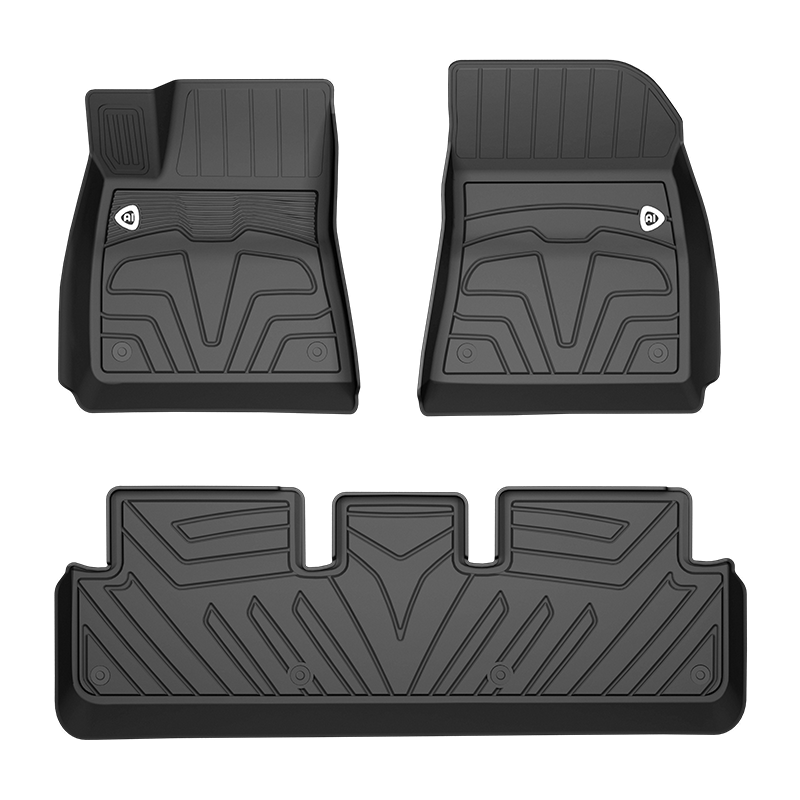2024-09-18
The comfort of car floor mats will change significantly in different seasonal environments. In particular, changes in temperature and humidity will have an important impact on their materials, functionality, and overall user experience. The following will discuss in detail the impact of seasonal changes on the comfort of car floor mats:
In winter, cold temperatures have a significant impact on the material and comfort of floor mats. Especially in low-temperature areas, drivers and passengers have more prominent needs for comfort.
In winter, the temperature inside the car is low, and the foot pads directly affect the warmth under the feet. Suede floor mats or blanket-like floor mats are very popular in winter because they provide good insulation. Compared to rubber floor mats, these materials are more flexible in cold environments and feel warm and comfortable to the touch. On the other hand, rubber or TPE mats may harden in winter, especially poor-quality rubber materials that become brittle at low temperatures, reducing the flexibility and comfort of the mats.
Snow and icy conditions in winter can make the interior of a car even more slippery, and drivers can easily bring water and snow into the vehicle when entering or exiting the vehicle. To maintain comfort, floor mats must have good anti-slip properties. Many rubber feet are designed with deep grooves or grooves that effectively grip the soles of your shoes and prevent them from slipping, while also preventing the spread of moisture and dirt.
Melting snow or rainwater often enters the car in winter. If the floor mats do not have good waterproof performance, it will cause moisture accumulation, make the feet slippery and uncomfortable, and even lead to the growth of mold in the car. High-quality rubber floor mats or floor mats with a waterproof coating work particularly well in this situation, preventing moisture from penetrating and keeping the interior of your car dry and comfortable.
Contrary to winter, the heat and heat of summer can bring different challenges to your car floor mats.
In high-temperature environments, especially in cars where the temperature may rise above 50°C, some low-quality floor mat materials (such as inferior rubber or PVC) will become soft and sticky at high temperatures, causing discomfort under the feet. This not only affects comfort, but may also produce odor and reduce the air quality in the car.
Materials with good high-temperature tolerance, such as TPE or EVA, perform better in summer. They can maintain the stability of the foot pads and prevent them from deforming or sticking to the feet. They also reduce the generation of odor and improve overall comfort.
Breathability
The weather is hot in summer, and the feet of drivers and passengers are prone to sweating. Good breathability can prevent sweat from accumulating on the surface of the foot pads and keep feet dry. Textile or fabric floor mats have better breathability and are suitable for summer use. However, these types of floor mats may absorb moisture and become difficult to clean in humid or rainy conditions during the summer.

The temperatures in spring and autumn are relatively mild, but rainy and humid, which brings waterproofing and anti-fouling challenges to car floor mats.
There is a lot of rain in spring and autumn, and the moisture-proof ability of the mats becomes particularly important. On rainy days, it is easy to bring mud and water into the car, causing slippery floor mats and water accumulation. Rubber floor mats have distinct advantages in these seasons, being able to prevent water penetration and making them easy to clean. The floor mats with high-edge design can effectively prevent water and mud from spreading to other parts of the car, ensuring a dry and tidy interior environment and increasing comfort.
In autumn, fallen leaves, soil and other debris are more likely to be brought into the car. High-quality anti-fouling floor mats, especially those with special anti-fouling coating on the surface, can effectively resist the penetration of dust, mud and stains and keep the interior of the car clean. Easy-to-clean materials such as rubber or TPE can help users easily clean the floor mats after rain or on muddy roads, maintaining a comfortable environment in the car.
Some high-quality car floor mats can adapt to a variety of seasons and environments, ensuring a stable comfort experience in different climate conditions.
Foot pads with four-season adaptability are usually made of materials that are resistant to temperature differences and have good flexibility, such as TPE, TPR (thermoplastic rubber), etc. This kind of material can maintain its comfort and stability whether in the cold winter or the hot summer. They neither harden easily in cold environments nor become sticky or smelly in high temperatures, making them suitable for year-round use.
Some car owners will change the floor mats of different materials according to the season. For example, they use warm suede floor mats in winter and replace them with breathable textile floor mats in summer. The removable design of the foot pads makes this flexibility possible, allowing users to adjust the foot pads according to seasonal changes to improve comfort.
The comfort of car floor mats is affected by environmental factors such as temperature, humidity, and rain in different seasons. In winter, you need foot pads with good warmth retention, waterproofness and anti-slip properties; in summer, you need foot pads that are high temperature resistant, non-stick and breathable. The rainy and humid environment in spring and autumn requires the mats to be waterproof, anti-fouling and easy to clean. You can maintain floor mat comfort year-round by choosing floor mat materials and designs that adapt to a variety of climate conditions.